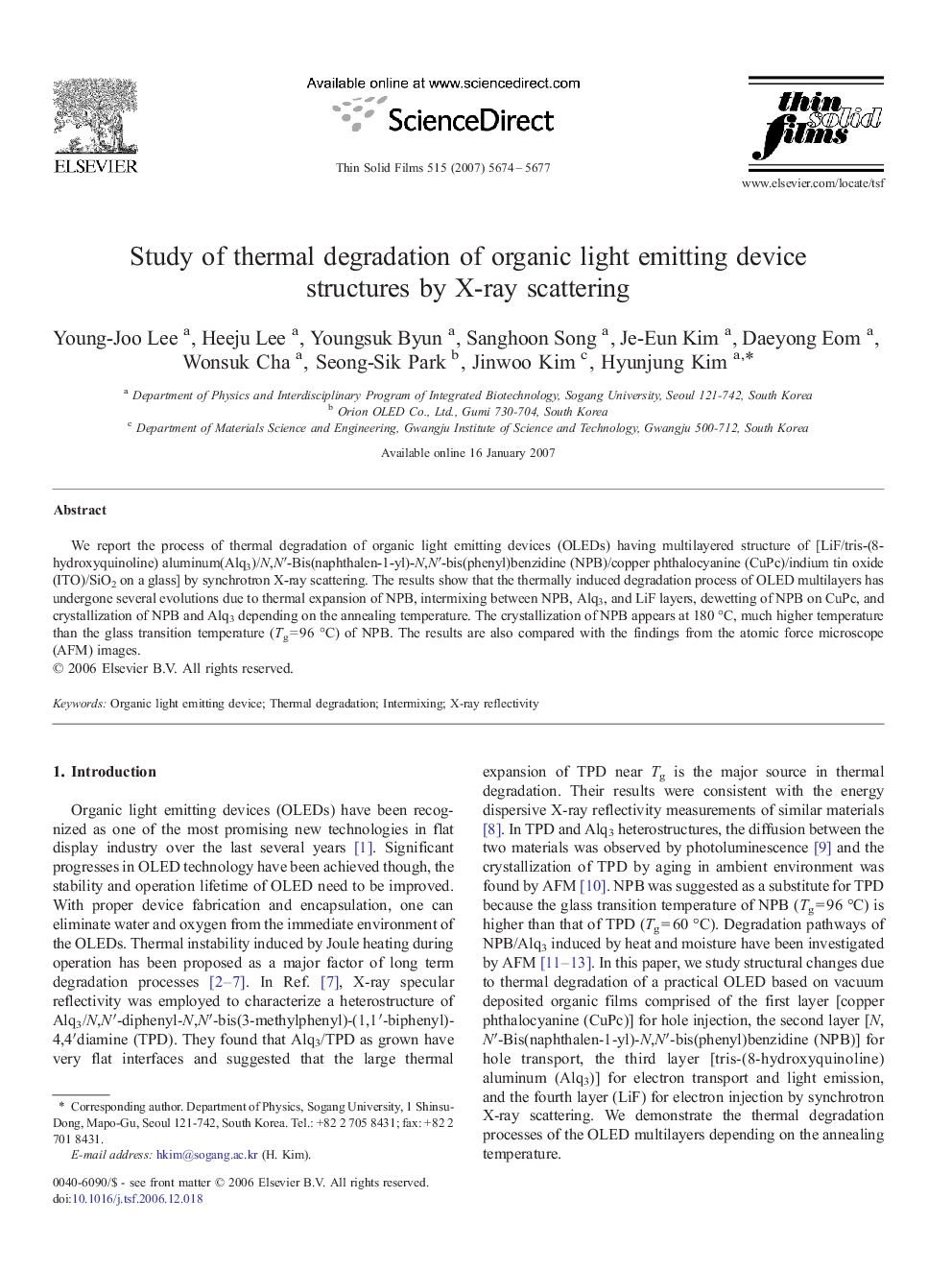| Article ID | Journal | Published Year | Pages | File Type |
|---|---|---|---|---|
| 1674026 | Thin Solid Films | 2007 | 4 Pages |
We report the process of thermal degradation of organic light emitting devices (OLEDs) having multilayered structure of [LiF/tris-(8-hydroxyquinoline) aluminum(Alq3)/N,N′-Bis(naphthalen-1-yl)-N,N′-bis(phenyl)benzidine (NPB)/copper phthalocyanine (CuPc)/indium tin oxide (ITO)/SiO2 on a glass] by synchrotron X-ray scattering. The results show that the thermally induced degradation process of OLED multilayers has undergone several evolutions due to thermal expansion of NPB, intermixing between NPB, Alq3, and LiF layers, dewetting of NPB on CuPc, and crystallization of NPB and Alq3 depending on the annealing temperature. The crystallization of NPB appears at 180 °C, much higher temperature than the glass transition temperature (Tg = 96 °C) of NPB. The results are also compared with the findings from the atomic force microscope (AFM) images.
